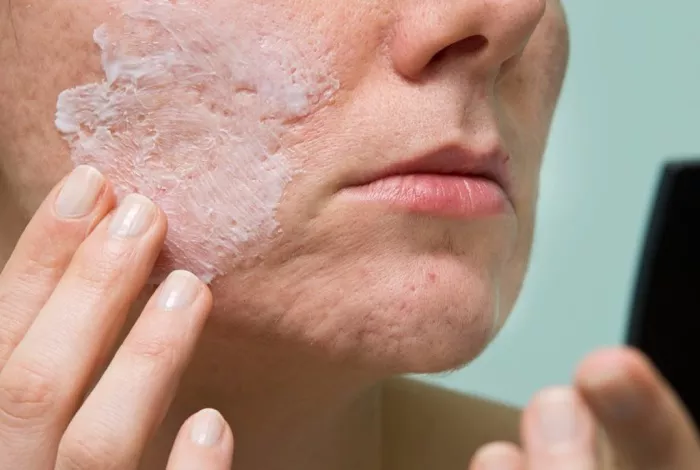Burn injuries can leave lasting scars that extend beyond the physical impact, affecting individuals emotionally and psychologically. Plastic surgery has emerged as a transformative avenue in the realm of scar management, offering hope and the possibility of improved function and aesthetics. This comprehensive exploration navigates the intersection of plastic surgery and burn scars, seeking to answer the question: Can plastic surgery fix burn scars? From the types of burn scars to the array of plastic surgery interventions, we delve into the multidimensional landscape of scar revision to shed light on potential solutions for those on a journey toward scar improvement.
Understanding Burn Scars
The Anatomy of Burn Scars
Burn scars result from injuries that damage the skin’s structure and may extend to deeper layers, including the dermis and subcutaneous tissues. The severity of burn scars is influenced by factors such as the depth of the burn, the extent of tissue damage, and the individual’s healing process. Burn scars can manifest as hypertrophic scars, keloids, contractures, or a combination of these, each presenting unique challenges in scar management.
Hypertrophic Scars
Hypertrophic scars are characterized by their raised and thickened appearance. They often develop within the boundaries of the original burn injury and can cause discomfort or restricted movement if they form over joints. Plastic surgery interventions aim to flatten and soften hypertrophic scars, enhancing both function and aesthetics.
Keloids
Keloids are a type of raised scar that extends beyond the original wound site. Individuals with a tendency to form keloids may find these scars challenging to manage. Plastic surgery approaches for keloid scars often involve excision, combined with additional strategies to prevent recurrence, such as radiation therapy or corticosteroid injections.
Contracture Scars
Contracture scars result from the tightening of the skin after a burn injury, leading to reduced flexibility and range of motion. Contractures can be particularly challenging, impacting not only the appearance of the scar but also the functional aspects of the affected area. Plastic surgery interventions for contractures focus on releasing the tightened skin and restoring mobility.
The Role of Plastic Surgery in Scar Revision
Scar Excision
Scar excision is a common plastic surgery technique for managing burn scars. During this procedure, the surgeon removes the existing scar tissue, allowing for the rejoining of the skin in a manner that minimizes tension and optimizes healing. Scar excision is often employed for hypertrophic scars, keloids, and contractures, depending on the specific characteristics of the scar.
Skin Grafting
Skin grafting involves transplanting skin from one area of the body (the donor site) to the site of the burn scar. This technique is especially useful for large burn areas where the skin’s natural regenerative capacity is limited. Skin grafts can significantly improve both the function and appearance of burn scars, providing a more natural skin texture.
Z-plasty and W-plasty
Z-plasty and W-plasty are plastic surgery techniques that involve repositioning scars to achieve better alignment with natural skin lines. These procedures are particularly effective for scars on areas with high mobility, such as joints. By altering the direction of the scar, Z-plasty and W-plasty aim to minimize tension and improve the overall cosmetic outcome.
Flap Surgery
Flap surgery is a more intricate plastic surgery procedure that involves the transfer of skin, along with its underlying blood vessels, from one part of the body to another. This technique is suitable for complex burn scars that require substantial reconstruction. Flap surgery offers a versatile solution, addressing both functional and aesthetic aspects of scar management.
Timing Matters: The Importance of Early Intervention
Early Surgical Intervention
The timing of plastic surgery interventions plays a crucial role in scar management. In many cases, early surgical intervention, performed once the burn wound has healed, can yield more favorable outcomes. Addressing hypertrophic scars, keloids, or contractures in their early stages allows for a proactive approach, preventing the progression of scar tissue and mitigating potential complications.
Secondary Procedures
For individuals with existing burn scars that have matured over time, secondary plastic surgery procedures may be considered. While scar tissue undergoes changes and stabilization over several months or even years, secondary procedures can still bring about significant improvements in both form and function. The decision to pursue secondary procedures is influenced by factors such as the scar’s characteristics and the individual’s goals.
Combining Approaches: Multimodal Scar Management
Adjunctive Therapies
Plastic surgeons often employ a multimodal approach to scar management, combining surgical interventions with adjunctive therapies to optimize outcomes. These adjunctive therapies may include laser treatments, corticosteroid injections, or silicone-based products. Laser therapy can help improve the texture and color of scars, while corticosteroid injections can reduce inflammation and promote scar softening. Silicone-based products, such as gels or sheets, are frequently used to create a protective barrier over the scar, helping to maintain moisture levels and modulate collagen production.
Pressure Garments
Pressure garments are another non-invasive adjunctive therapy commonly used in conjunction with plastic surgery interventions. These specially designed garments apply controlled pressure to the scar, aiming to flatten and soften the scar tissue. Pressure garments are particularly effective for hypertrophic scars and can contribute to improved scar outcomes when used consistently.
Considerations for Individualized Treatment Plans
Scar Characteristics
The characteristics of the burn scar, including its type, size, and location, play a crucial role in determining the most appropriate plastic surgery approach. For example, hypertrophic scars may respond well to scar excision or laser therapy, while contractures may require flap surgery or Z-plasty to address both the tightening of the skin and the associated functional limitations.
Patient Goals and Expectations
Understanding the patient’s goals and expectations is fundamental in developing an individualized treatment plan. Plastic surgeons work closely with patients to establish realistic expectations and goals for scar improvement. While complete scar removal may not always be achievable, significant enhancements in scar appearance, flexibility, and overall well-being are attainable through tailored interventions.
Postoperative Care and Recovery
Postoperative Monitoring
Postoperative care is a critical component of the scar revision process. Plastic surgeons closely monitor the healing progress and may recommend specific postoperative care routines, including wound care, scar massage, and the use of recommended skincare products. Following postoperative instructions diligently contributes to optimal healing and scar maturation.
Scar Massage and Skincare
Scar massage is often recommended as part of postoperative care. Gentle massage techniques can help break down scar tissue, improve blood circulation, and promote a more pliable scar. Additionally, the use of skincare products, such as those containing silicone or other recommended ingredients, can further support scar softening and hydration.
Potential Challenges and Considerations
Recurrence and Persistence
While plastic surgery interventions can yield significant improvements, it’s important to acknowledge that scar recurrence or persistence is possible, especially in the case of keloids. Plastic surgeons may employ additional strategies, such as corticosteroid injections or radiation therapy, to mitigate the risk of recurrence and optimize long-term outcomes.
Psychosocial Impact
The psychosocial impact of burn scars should not be underestimated. Individuals with burn scars may experience emotional and psychological challenges related to body image and self-esteem. Plastic surgeons, often working in collaboration with mental health professionals, address these aspects of care to support individuals in their holistic recovery.
Conclusion
In conclusion, the intersection of plastic surgery and burn scars opens a path to restoration for individuals seeking to overcome the physical and emotional impact of burn injuries. The comprehensive range of plastic surgery interventions, from scar excision and skin grafting to Z-plasty and flap surgery, reflects the evolving landscape of scar management.
Can plastic surgery fix burn scars? The answer lies in the multidimensional approach that plastic surgeons adopt, addressing both the functional and aesthetic aspects of scar revision. The timing of interventions, the characteristics of the burn scars, and the integration of adjunctive therapies contribute to the success of scar management. As plastic surgery continues to advance, individuals with burn scars can embark on a journey toward healing, renewed confidence, and an improved quality of life. The collaboration between skilled plastic surgeons, supportive healthcare professionals, and resilient individuals paves the way for transformative solutions in the realm of burn scar revision.
[inline_related_posts title=”You Might Be Interested In” title_align=”left” style=”list” number=”6″ align=”none” ids=”3538,3512,3477″ by=”categories” orderby=”rand” order=”DESC” hide_thumb=”no” thumb_right=”no” views=”no” date=”yes” grid_columns=”2″ post_type=”” tax=””]
































